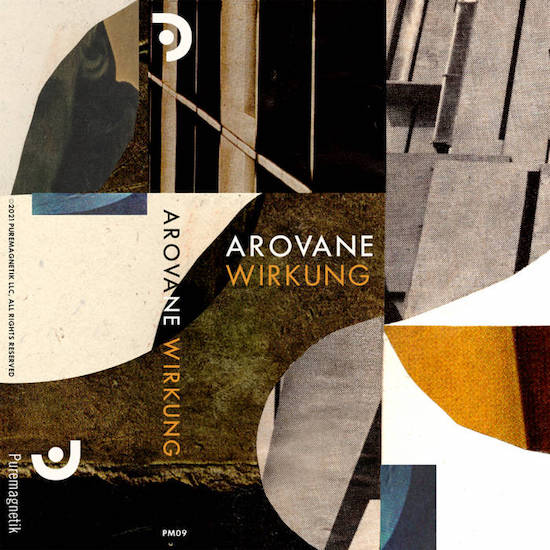From deep in the German countryside comes a collection of pieces which, paradoxically, manage to both approach and discard serenity. Arovane’s latest album was recorded during lockdown. In his own words, “the disturbing news was from afar.” Wirkung (‘Effect’) puts paid to this claim over its fifteen tracks, by turns soothing and rousing. His aim of creating a series of sound images, micro-soundtracks for Arovane’s mind’s eye, has been fully achieved and then some, at points perfectly conveying the awe one is struck by in the presence of the sublime, before ripping away the comforting rug altogether on tracks like ‘Gand’ or ‘Sloon’.
This is electronic music, fittingly, on the fringes. No consistent beats here, nary a mouse-click hi-hat in earshot. Instead, the glitch-ridden tides of ambience are punctuated most often by the arrival of a new melody, each note’s attack sufficing as percussion enough. Besides, you wouldn’t want a beat over pieces like this – the point is to make us stop for a moment, not push on to some inevitably unsatisfying climax. ‘Niin’ or the title track perfectly capture this immanent essence of the record, almost compelling us to halt in place and drink in our surroundings (assuming, of course, that your surroundings feature a gorgeous waterfall scene). I must add, however, that this album is so successful in its reminiscent affect that it sounds a little too familiar at points. On the aforementioned ‘Niin’ it becomes impossible to avoid comparisons to Music For Airports, texturally and harmonically. Likewise, Arovane’s shorter tracks, especially the intro to opener ‘Olopp Eleen’, bear significant resemblance to Fennezs or Oval in their hiss-popping blankets of sound.
This is not to say that you shouldn’t give Wirkung a try – au contraire, it carries all the marks of a great ambient record, with timeless production (i.e. reminds me a lot of SAW 85–92), fascinating ideas, and an experienced editor’s approach to concision, with no cut overstaying its welcome and many clocking in around two minutes. It effects distinct sensations without the need for lyric nor beat, and on tracks like ‘Hymn’, ‘Stat’, or ‘Elangt’, it’s hard to be anything but awestruck, bordering on teary. It is a gorgeous record, no doubt.
My question more revolves around the privilege, ugly as it may be, that allowed this piece of art to come to fruition. “Am I a romantic person? Yes!” says Arovane, and we cannot waste this opportunity to discuss the link between Wirkung and the German Romantic movement itself. Like Hölderlin or Schumann, here we are presented with the stunning, majestic beauty and power of nature, its richness practically spilling out of the artwork and drawing our perception back in, reflected succinctly by Arovane’s gorgeous cycles of pad and lead, very much like a tide. Simultaneously however, we cannot forget the position of the artist responsible; a fortunate son with time and money enough to spare that such a beautiful, sublime work can be revealed at all. So while this release is certainly a gift and a joy, it is also a bitter reminder – that such a close relationship to nature borne out in art is afforded to a decreasing number, and may well disappear entirely, like the Romantics themselves, back into the forest.Ar


